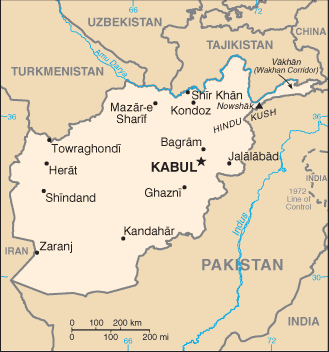A public protest by Afghanistan’s Shi’ite Hazara minority in Kabul turned tragic today, when ISIS launched a suicide bombing against the demonstration, killing at least 80 people and wounding at least 231 others.
 The Hazaras were protesting over the planned route of a power transmission line from Turkmenistan to Kabul, calling for it to be rerouted through a pair of provinces with large Shi’ite populations to ensure the electricity supply there. The government has argued this change in route would take years and cost millions of dollars more.
The Hazaras were protesting over the planned route of a power transmission line from Turkmenistan to Kabul, calling for it to be rerouted through a pair of provinces with large Shi’ite populations to ensure the electricity supply there. The government has argued this change in route would take years and cost millions of dollars more.
ISIS was quick to claim credit for the attack, saying a pair of suicide bombers with explosive belts got into the crowd and detonated, causing huge casualties. The death toll is the single deadliest attack on the Shi’ite minority during the entire US occupation.
The Hazaras are often discriminated against and targeted by Islamist groups for their beliefs, both in Afghanistan and Pakistan. Such attacks are usually small attacks of opportunity against pilgrim buses or the like. This attack was much larger because such a large crowd was gathered.
Indeed, throughout much of the war the Hazara-dominated provinces in central Afghanistan were simply ignored by the Taliban, who mostly just worked around those regions. Though the Taliban persecuted the Hazaras when they were in power, they’ve appeared less desperate to target them directly during the insurgency than most smaller groups, who are trying to bolster their bona fides as Islamist groups by going after religious minorities.
ISIS, on the other hand, has used sectarian unrest in Iraq and Syria as their ticket to power, and in trying to expand into Afghanistan going after their own Shi’ites probably seemed the obvious first step. On the other hand, unlike in Syria or Iraq the Hazaras have little to no real power in Afghanistan, which means such attacks are likely to be less impactful for ISIS recruitment purposes.


